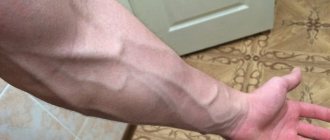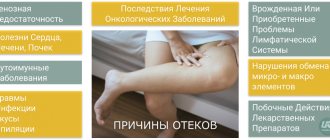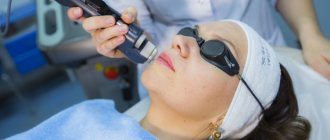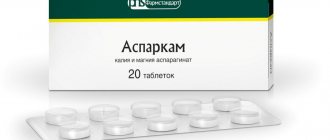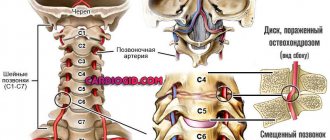Vegetative-vascular dystonia develops as a result of prolonged stress on the nervous system, regular overwork or mental disorders. Long-term stress disrupts the functioning of internal organs and causes wear and tear on the body. As the disorders progress, the patient develops various symptoms, one of which is nausea due to VSD.
The mechanism of nausea caused by autonomic dysfunction is known to modern specialists, which allows them to select the most effective methods to eliminate it. At the Yusupov Hospital, VSD treatment is carried out by neurologists, cardiologists, therapists and other specialists who are proficient in innovative technologies and safe methods of therapy.
Basic information about the disease
The work of internal organs is controlled by special autonomic nerves that control metabolism along with digestion, body temperature, blood circulation and sleep. They are an ambulance for the body and provide a timely response to changes in atmospheric pressure and other factors.
The fact is that the autonomic nervous system controls all processes that occur without the conscious participation of the person himself. But under excessive loads, long experiences and strong negative emotions, it fails.
Causes of nausea
Dysfunction of the autonomic nervous system affects a person’s well-being. Nausea with VSD is quite common. The disease manifests itself constantly or in attacks. Understanding the cause of discomfort contributes to proper treatment. The following factors provoke nausea.
Increased anxiety when perceiving the environment
The brain receives a signal about impending danger. The body mobilizes for fight or flight. To relieve unnecessary weight, the stomach, intestines and bladder are cleared of contents. Thoughts of danger activate the sympathetic nervous system and inhibit the parasympathetic system, which regulates digestion. The digestive process slows down and food undigested by the stomach rushes out.
Increased muscle tension
At the moment of excitement, the abdominal muscles become very tense. They put pressure on the stomach, causing a feeling of nausea. Severe stress provokes stomach spasms and spasms of the esophagus. Vomiting begins.
Aerophagia
Panic attacks cause rapid breathing through the mouth and a feeling of heart palpitations. Air accumulates in the gastrointestinal tract, causing nausea. This also happens to healthy people who have experienced severe stress, but when the cause of the anxiety has passed, the malaise disappears. In a person suffering from VSD, the vegetative symptom is constantly present, disappearing only for a short time. Even when the patient is calm, the body is in a state of anxiety. The brain continues to evaluate the situation as dangerous. This is chronic stress.
Functional disorders of the gastrointestinal tract
The gastrointestinal tract is regulated by the autonomic system. When excited in a stressful situation, blood pressure rises, coronary and muscle vessels dilate. Less blood is already entering the esophagus. In the absence of dilation of the esophagus, food is not digested. The result is nausea, as the body tries to get rid of undigested food.
Constant stress provokes gastrointestinal diseases: inflammation of the mucous membranes of the stomach and intestines, dyskinesia of the gallbladder, pancreatitis, cholecystitis and others.
Thoughts of nausea do not leave my head
With dystonia, the patient constantly thinks about the problem that worries him, turning thoughts in his head hundreds of times a day. This happens automatically and unconsciously. Even when a person is busy and not thinking about illness, obsessive thoughts still appear, negatively affecting the body. Especially when the patient is alone, his internal dialogue wakes up and adds fuel to the fire.
Clinical manifestation of pathology
One of the most common manifestations of this disease, despite the variety of various clinical forms, is considered to be angiodystonic cerebral syndrome. It can be expressed by general cerebral symptoms, which include:
- headache;
- dizziness;
- nausea and vomiting;
- photophobia;
- fainting;
- noise in ears.
Failure of the nervous system can affect a person’s health. In this case, the vessels narrow and expand unexpectedly and randomly, involving many organs and various body systems in pathological processes. Symptoms of vascular dystonia can be constant or manifest as attacks.
How does nausea occur with VSD?
The digestive system has powerful regulation that interacts with the nervous system. The functioning of the digestive organs depends on this interaction. Overexcitation, which is provoked by stress, leads to an increase in the intensity of myocardial contractions, because of this the vessels of skeletal muscles and the heart dilate. Blood spreads from the esophagus to various organs, and the functioning of the digestive system, in turn, is suspended. Against the background of all this, the esophagus does not expand and signals that it is not ready to receive food. The body tries to get rid of food and causes nausea.
Against the background of VSD, nausea can be provoked by a violation of the outflow of bile, and in addition, by the release of pancreatic juices as a result of intestinal spasm. Due to improper functioning of the nervous system, reflux may occur, in which stomach contents are thrown into the esophagus, causing pain and nausea. Unpleasant sensations along with gagging that occurs in the larynx and contraction of the esophagus are signs of nausea. It often precedes vomiting or occurs independently.
Often, nausea and vomiting with VSD are additionally accompanied by dizziness, weakness, fainting and pale skin. By the way, constant nausea with this disease, which is not associated with anxiety, may indicate a somatic disease in the form of cholecystitis or gastritis.
How to fight
It is possible to completely get rid of the symptoms of the disease only by eliminating the disease itself, however, there are ways to temporarily alleviate your condition.
Physiotherapeutic methods:
- Acupuncture massage of the wrist, which should not be overused, as addiction develops and the effect disappears.
- Washing with cold water will not only relieve the symptom, but also to some extent neutralize the syndrome itself.
- Special breathing with slow inhalations and exhalations through the nose.
- Forced relaxation of the abdominal muscles.
- Eating your favorite food can also play on your innate reflexes and switch the body from stress to digestion, and changes in stomach filling will force the gastrointestinal tract to focus on the body.
- Relax and switch your thoughts to something positive.
- Many people are helped to get rid of nausea by eating sour or lightly salted foods, such as fruits or pickles.
If nausea or vomiting occurs frequently or severely, or interferes with important work, then you can resort to medicinal methods of relief, which are sold in large quantities in pharmacies, but have many side effects with long-term use. Therefore, the selection of a medication for nausea during VSD must be made at an appointment with a doctor, provided that he considers it necessary. It’s better to limit yourself to traditional methods of combating nausea.
Head pain and dizziness due to VSD
We have already said that VSD is often accompanied by nausea and headache. The latter has several differences in this disease. For example, in its strength it lags behind toothache or other types of pain. In this regard, if the headache is sharp and severe, then this is not VSD at all.
Its constant sensation, accompanied by frequent dizziness, fainting, unsteadiness of gait, nausea and weakness, and, in addition, ringing in the ears, on the contrary, indicates VSD. In such patients, headaches and dizziness often occur in the morning, immediately after waking up, within 5 minutes. But they can accompany a person all day, from morning to evening.
Moreover, in most situations, when bending the body, pain can intensify and become pulsating. The symptom usually disappears during sleep, when the person loses consciousness. Night headaches are not typical for VSD. But when it appears, the whole head or only certain parts of it may hurt.
In addition, there may be pulsation of blood vessels in the temples along with discomfort in the neck and back of the head. Sometimes there may be a feeling of stuffiness in one ear. Headache in the presence of VSD, as a rule, does not depend on pressure readings, and also does not respond to the use of painkillers. Usually, against the background of this disease, the pressure is only slightly deviated from the norm.
Diagnostics
To exclude gastrointestinal diseases, gastroscopy and other studies will be required.
If the patient already has a diagnosis of VSD, if the doctor complains of nausea, he will quickly determine its causes. However, differential diagnosis with diseases of the stomach, gallbladder and liver is mandatory. You also need to take a stool and urine test to rule out infections and parasites. Additionally, gastroscopy and ultrasound of the abdominal organs may be prescribed.
If no deviations from the norm are detected, the gastroenterologist has not detected any diseases, and infectious causes have been excluded, you should consult a neurologist and therapist. As a rule, vomiting with VSD is accompanied by other symptoms characteristic of this disorder, so the doctor will be able to associate gastrointestinal disorders with autonomic dysfunction.
Osteochondrosis - the main symptomatology
Nausea is observed with VSD and osteochondrosis. When studying the overall picture of the symptoms of these two diseases, it is necessary to understand that their manifestations are largely similar. With osteochondrosis in combination with VSD, people may experience very severe pain, which is similar to intercostal pain, but the intensity of its manifestation is several times more noticeable. Light palpation along with tapping can intensify it.
Against this background, it becomes difficult for people to do even simple physical work. Patients with VSD and osteochondrosis may experience a threefold decrease in motor activity. Doing mental work also becomes difficult and sometimes even impossible. With osteochondrosis and VSD, nausea and weakness are observed simultaneously.
How to explain the mechanism of muscle weakness during VSD? The reason lies in carbohydrate metabolism. It is no secret that these compounds are one of the main sources of energy that the body draws from nutrition. The supply of this valuable substance is constantly stored in the human liver and muscles in the form of glycogen and is consumed as needed.
To get energy from muscles, a person must move: biochemical processes are designed in such a way that glucose is released from glycogen only during physical activity, and in a passive position it practically does not arrive.
That is why doctors are sure that the described feeling can be expelled by performing active, intense movements. And the reasons for this are that the patient’s sense of self and consciousness become too vulnerable. There is a fear of performing unnecessary movements, and life activity in such cases is reduced to fulfilling exclusively household needs.
A lack of willpower leads to the fact that a person cannot endure even mild pain, which is accompanied by panic attacks. Such patients are anxious for any reason. Their panic attacks are accompanied by a rapid pulse, chills, tremors, severe dizziness, nausea and a significant fear of death.
Prevention
VSD is a disease of nervous people who do not know how to rest. Therefore, the best prevention of attacks is an adequate alternation of work and rest. Patients are also recommended to:
- play sports (moderate exercise);
- take a walk every evening before going to bed;
- eat your favorite but healthy food;
- drink more water;
- Get a relaxing massage regularly;
- learn techniques to deal with stress.
For VSD, you can regularly take a course of the drug Glycine. This is a natural nootropic that improves brain function and has a mild sedative effect. It is recommended during periods of increased mental and physical stress. You can also replace this medicine with simple sedatives that are not addictive. If you have VSD, you can undergo a full course of relaxing professional massage or acupuncture twice a year; it is useful to practice swimming and yoga.
How to get rid of these symptoms with VSD?
The key to adequate therapy is correct and at the same time timely diagnosis. Therapy is prescribed, as a rule, by a neurologist, therapist and psychiatrist after diagnosis.
To prevent fainting, physical therapy is necessary along with hardening procedures and restorative medications. Situations that provoke loss of consciousness and lead to destabilization of the nervous system should be avoided. It is very important to walk daily in the fresh air for at least three hours. Emotional stress is perfectly eliminated by night sleep with a total duration of eight to ten hours.
Treatment
A mild form of VSD does not require drug treatment, but folk remedies and physiotherapy are preferred. Decoctions of soothing herbs are used: chamomile, St. John's wort, hawthorn, mint, valerian. The patient should adhere to a set of recommendations:
- daily walks in the fresh air;
- adherence to set sleep and wake times;
- healthy, nutritious nutrition;
- eating fresh vegetables and fruits;
- absence of bad habits.
If nervous excitement causes emotional distress, visiting a psychotherapist will bring tangible benefits. The doctor will help you understand the problems and teach you ways to distract yourself from them. Several techniques will help you quickly get rid of nausea:
- Physical exercise. It is necessary to use up the adrenaline that has entered the bloodstream. Light physical activity will relax muscle spasms and burn off excess adrenaline. Useful for acute and chronic conditions. Do not overdo it so as not to increase the symptom.
- Correct breathing. Performed in a comfortable position. You need to take a deep breath, hold your breath and exhale slowly after 4 seconds. Then count to 4, inhale again. Duration – one minute.
- Abdominal relaxation. To perform the exercise, tense your abdominal and perineal muscles at the same time. Stay in this position for 10 seconds. Repeat 3 times.
- Washing with cool water. Well relieves physical manifestations of anxiety disorder. Cold water inhibits the activity of the sympathetic system, activating the parasympathetic. Nausea will disappear, anxiety will decrease. It is better to wash only your face and not take a shower.
- Massaging biologically active points. Tibetan medicine uses wrist acupuncture. Massaging the wrist area for a few minutes relieves nausea of any nature. The greater effect of such a procedure will be in an acute condition, but in a chronic condition, addiction occurs.
- Refuting obsessive thoughts. You need to write down disturbing thoughts on paper. It is often difficult to identify them the first time, but it is worth trying. A realistic refutation of the danger is indicated for each alarming thought. After this practice, the condition returns to normal within 5-10 minutes.
- Favorite food. If the patient is poorly nourished due to nausea, you need to prepare a delicious lunch and decorate it beautifully. Such food will not necessarily be healthy. The goal is to create a desire to eat.
How to get rid of nausea?
Nausea is especially unpleasant with VSD. Neurological failure of the stomach requires stabilization of all digestive processes and awareness of the existing psychological problem. Drug therapy is of secondary importance. The most important thing is the patient’s desire to cope with his illness. He must definitely relieve tension; of course, sedatives will also help him.
If nausea does not go away, therapy should be comprehensive and include the following points:
- Absolute exclusion of foods that are difficult for the stomach.
- Normalization of the psychological state through sedatives.
- Physical exercise.
- Rest along with getting rid of fears and obsessions.
- Use of painkillers under medical guidance.
Recommendations for reducing the frequency of attacks
People whose pathology has become chronic have to constantly struggle with unpleasant symptoms. Over time, they adapt and learn to stop attacks on their own. It is important to follow these rules:
- Take a contrast shower in the morning and wash your face with cool water.
- Massage acupuncture points.
- Swimming, walking in the fresh air.
- Do gymnastics for muscle relaxation.
- To refuse from bad habits.
- Drink more fluids.
- Avoid tastes and smells that trigger the gag reflex.
- Allocate enough time for rest.
Attacks of VSD and nausea can worsen in weather-sensitive people during weather changes. Their joints and head begin to ache. A quick solution to the problem is to take antispasmodics. Massage of the temporal and superciliary areas, the back of the head and neck significantly eases the condition.
Dystonia is often accompanied by a gag reflex. It can only be eliminated if efforts are aimed at treating the underlying pathology.
The body’s autonomic system is part of the nervous system, which is responsible for maintaining the harmony of the organs in our body. Of the many existing symptoms, most likely the most difficult to tolerate of all is constant nausea with VSD. Almost 65% of patients with dystonia encounter it. What do VSD and nausea have in common?


